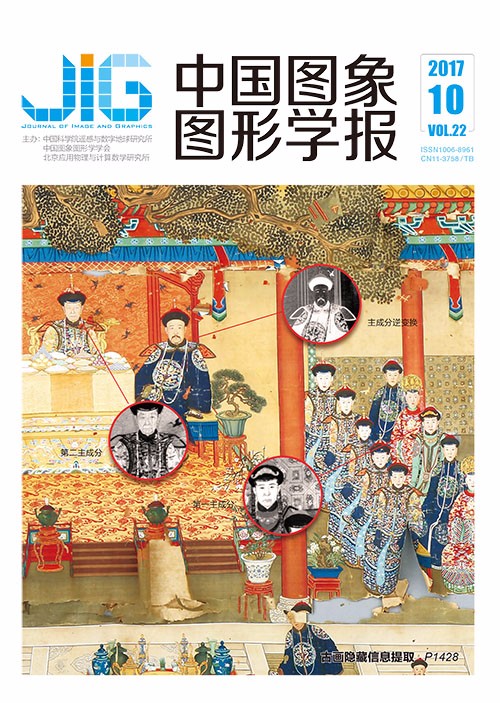
采用双向斜拉式弯曲划分的曲线渐进化简方法
摘 要
目的 曲线化简是制图综合中的经典研究问题和重要研究内容,以往曲线化简以顶点压缩为主,而制图综合中曲线化简是渐进删除小弯曲,保留特征弯曲的过程,因此提出一种以弯曲为化简单元的曲线化简方法。方法 通过弯曲划分、弯曲渐进取舍实现线要素化简:分析斜拉式弯曲划分方法优点与不足的基础上,提出一种双向斜拉式弯曲划分方法,使弯曲划分结果更加准确、完整;在双向斜拉式弯曲划分的基础上,探测弯曲间关系,将具有不同关系的弯曲定义为3类弯曲,并在此基础上划分两类弯曲组;对不同类型的弯曲组采用不同的弯曲取舍方法及取舍顺序,渐进删除弯曲,避免化简过度;重复弯曲划分、弯曲关系探测、弯曲取舍等过程,直至化简结果中不存在目标尺度下不可见的细小弯曲为止,实现曲线渐进化简,充分化简曲线以满足目标尺度下视觉要求。结果 以某地区1:25万的水系数据为实验对象,实验1分别利用双向斜拉式弯曲划分方法和斜拉式弯曲划分方法对其中16条线状河流要素划分弯曲单元,双向斜拉式弯曲划分方法划分的弯曲单元形态上更符合认知规律,且划分结果较斜拉式弯曲划分结果更加完整,避免了弯曲遗漏;实验2分别利用D-P算法、基于三元组的曲线化简方法、本文方法将16条线状河流要素由1:25万分别化简至1:50万、1:100万、1:200万,本文方法的各尺度化简结果较另两种方法在认知层次、几何层次、地理层次上都具有一定优越性;实验3增加实验数据量,对956条不同形态曲线构成的水系依实验2进行对比化简实验。计算每条曲线利用不同方法化简至各尺度后产生的位置误差,并统计不同结果中所有曲线位置误差的平均数、加权平均数、中位数等统计值量化评估化简结果,本文方法各尺度化简结果中位置误差的统计值均小于另两方法同尺度化简结果中位置误差的统计值。结论 双向斜拉式弯曲划分方法划分曲线弯曲更加完整、准确、符合认知,采用双向斜拉式弯曲划分的曲线化简方法符合人工化简过程和认知规律,在形态保持、地理特征保持等方面都有一定优势,适于多种形态曲线化简,用于形态相对曲折、复杂的线要素化简时优势明显,适用于制图综合实际应用。
关键词
Progressive line simplification approach based on the double-oblique-dividing-curve method
Du Jiawei, Wu Fang, Gong Xianyong, Li Jinghan, Xing Ruixing(Institute of Survey and Mapping, Information Engineering University, Zhengzhou 450001, China) Abstract
Objective Line simplification is not only one of the most classic problems but also an important content in cartographic generalization.Most custom line simplification methods focus on the vertexes compression of line features.In cartographic generalization,line simplification is a process of deleting subordinate bends and preserving major bends.Therefore,a new line simplified method based on bend units is proposed.Method Line features are simplified by the processes of curve bends division and bends deletion.First,after analyzing the characteristics of the oblique-dividing-curve method,the double-oblique-dividing-curve method is proposed to cover the shortage of the former.Bends divided by this method are more accurate and complete.Second,the relationships of bends divided by the double-oblique-dividing-curve method are detected.All bends are classified into three types according to the relationships detected before.In addition,line features are divided into two types of bend-groups,which are distinguished according to different types of bends.Third,different bend deletion methods are used in different types of bend-groups to simplify curve bends gradually and to avoid simplifying excessively.Finally,processes of bend division,relationship detection,and bend deletion are not repeated until all bends divided by the double-oblique-dividing-curve method can be distinguished in the simplified scale.Line features are simplified progressively to reach the visual requirements of the target scale.Result Line features of hydrographic net someplace at the scale of 1:250 000 are used in the following three experiments.In the first experiment,16 line features and part rivers of the hydrographic net are divided into several bends used the double-oblique-dividing-curve method and the oblique-dividing-curve method.Apparently,each bend divided by the double-oblique-dividing-curve method is more suitable for cognition.The result of the double-oblique-dividing-curve method is more completed than the oblique-dividing-curve method because of avoiding bends omission of the oblique-dividing-curve method.In the second experiment,these 16 line features,at the scale of 1:250 000,are simplified to the scale of 1:500 000,1:1 000 000,and 1:2 000 000 used D-P method,the simplification method based on three-element-bend group,and the proposed method.In terms of the cognitive level,the geometric level and the geographical level,each simplification result used the proposed method of the three target scales is more perfect than the other simplification results used in the other two methods of the same target scale.Moreover,the number of test line features are extended in the third experiment.The hydrographic net,with 965 line features in various shapes,at the scale of 1:250 000,is simplified to the scale of 1:500 000,1:1 000 000,and 1:2 000 000 used the same method as the second experiment.In addition,the location error of each simplified line feature is calculated to evaluate the simplification in quantification,which is used to measure the average displacement resulting from the simplification method.To show clarity,the mean value,the weighted value,and the median value are counted from all location errors of line features in the result,which is simplified to one of the three target scales by one of the three simplification methods.Mean values,weighted values,and median values of results simplified by the proposed method are smaller than the other results simplified by the other two methods at all the three target scales.Conclusion Curve bends divided by the double-oblique-dividing-curve method is more complete and more accurate according to cognition.Line simplified method based on the double-oblique-dividing-curve method is suitable to the process of manual simplification and cognition.Additionally,it has some advantages in preserving the similarity of geometric features and the integrity of geographic features.Although the proposed simplification method is suitable to simplify line features of various shapes.The proposed method has a significant advantage in simplifying complicated line features,which are composed of numerous crowded bends.Importantly,the proposed simplification method based on the double-oblique-dividing-curve method is suitable for practical simplification of cartographic generalization.
Keywords
cartographic generalization line simplification Gestalt principles oblique dividing curve bend-group
|



 中国图象图形学报 │ 京ICP备05080539号-4 │ 本系统由
中国图象图形学报 │ 京ICP备05080539号-4 │ 本系统由